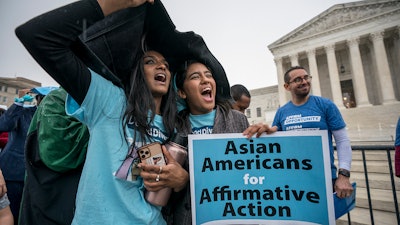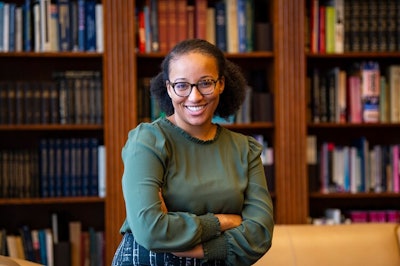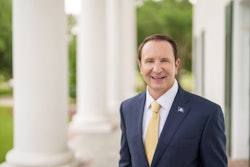In a pair of votes, the U.S. Supreme Court struck down race consciousness in college admissions on Thursday, upending four decades of precedent and reshaping the landscape of higher education.
The court split down partisan lines in the decision, with the conservative-leaning majority outvoting the liberal-leaning minority 6-3 against the race conscious practices of the University of North Carolina (UNC) and 6-2 against the practices of Harvard University. (Justice Ketanji Brown Jackson, who served on Harvard’s Board of Overseers, recused herself from that case.)
“[Universities] have concluded, wrongly, that the touchstone of an individual’s identity is not challenges bested, skills built, or lessons learned, but the color of their skin,” wrote Chief Justice John Roberts for the majority. “Our constitutional history does not tolerate that choice,”
Roberts’ opinion articulated three main reasons that the affirmative action programs at Harvard and UNC violated the equal protection clause of the 14th Amendment.
Roberts argued, Harvard and UNC’s race-based admissions programs are impossible to review because their goals, such as helping students gain new knowledge based on diverse outlooks, creating a robust marketplace of ideas, and preparing citizens ready to engage with a diverse world, are not sufficiently coherent or measurable. “How is a court to know…whether the exchange of ideas is ‘robust’?” wrote Roberts.
Secondly, Roberts argued, college admissions is a zero-sum game, and the racial admissions systems inevitably use race as a negative characteristic and require racial stereotyping. Roberts also criticized the racial categories used by the schools as “overbroad” (no difference, for example, between South Asians and East Asians), arbitrary or undefined (“Hispanic”) or underinclusive (the lack of a category for Middle Easterners.) He rejected the idea that colleges should receive unlimited deference in making racial judgments.
Finally, Roberts ruled that the admissions programs lack a “logical end point.” Robert argued that measuring progress by comparing the racial breakdown of an incoming class to a previous class or the population in general amounts to an unconstitutional racial balancing test.

"The opinion issued today by the United States Supreme Court marks the beginning of the restoration of the colorblind legal covenant that binds together our multi-racial, multi-ethnic nation," Blum said in a statement. "The polarizing, stigmatizing and unfair jurisprudence that allowed colleges and universities to use a student's race and ethnicity as a factor to admit or reject them has been overruled. These discriminatory admission practices undermined the integrity of our country's civil rights laws.
"Ending racial preferences in college admissions is an outcome that the vast majority of all races and ethnicities will celebrate. A university doesn't have real diversity when it simply assembles students who look different but come from similar backgrounds and act, talk, and think alike."
The decision was blasted by advocates of diversity in higher ed.
“This is a sad day for our country,” said Dr. Ted Mitchell, president of the American Council on Education. “Today’s misguided decision by the U.S. Supreme Court is an attempt to move America in the wrong direction. By denying colleges and universities an essential tool for inviting students with diverse perspectives and experiences to their campuses, this ruling will harm the educational experience of all students.”
“Today’s Supreme Court decision inexplicably rejects 40-plus years of precedent, and each college’s, university’s or state system’s individual autonomy to gauge the inherent educational value of demographic diversity for their respective campus communities,” wrote the Thurgood Marshall College Fund.
The National Association of Diversity Officers in Higher Education agreed.
“The Supreme Court has erred grievously in overturning decades of precedent that has affirmed the legality and value of race-conscious admissions practices,” Nadohe said in a statement. “Today’s rulings present yet another obstacle for students seeking equitable access to the opportunities that a college degree offers, such as higher earnings and lower rates of unemployment.”
 Dr. Dominique Baker, an associate professor of education policy at Southern Methodist University
Dr. Dominique Baker, an associate professor of education policy at Southern Methodist University
“The broad contours of the opinion appear to be written for a country where racial equity and justice had been achieved, for a wholly unrealistic accounting of our country. It appears to be rejecting the notion of structural racism,” said Baker. “This is not good.”
In response to the decision, the White House released a statement promising to fight to preserve the nation’s progress on racial equity. The Biden administration announced that it would convene a national summit on educational opportunity and release a report on strategies for increasing diversity and educational opportunity. The announcement called on colleges to give serious consideration to non-racial factors like the financial status of a student’s family, where a student grew up and went to high school, and personal hardship and discrimination, including racial discrimination, that a student may have faced.
Dr. Miguel A. Cardona, the U.S. Secretary of Education addressed higher ed leaders in a statement.
“Now is not the time to lessen your commitment to campus communities that reflect the rich diversity of this nation, which enhance the college experience in myriad ways and prepare students from all walks of life to live, work, and lead our democracy together,” he said. “Your leadership and commitment to ensuring our educational institutions reflect the vast and rich diversity of our people are needed now more than ever.”
The majority opinion did leave room for some inclusion of race in applications, as long as the discussion of race is concretely tied to an aspect of character or unique ability that an applicant can bring to a university.
“Nothing in this opinion should be construed as prohibiting universities from considering an applicant’s discussion of how race affected his or her life, be it through discrimination, inspiration, or otherwise,” wrote Roberts. “A benefit to a student who overcame racial discrimination, for example, must be tied to that student’s unique ability to contribute to the university. In other words, the student must be treated based on his or her experiences as an individual—not on the basis of race.”
Dayna Bowen Matthew, dean and Harold H. Greene professor of law at the George Washington University Law School, described herself as disappointed by the decision but “encouraged by the care the court took to leave open the door.”
“It’s going to take time to understand fully where the court is directing us in terms of how we may and may not use race,” she said. “But we can learn from the examples that the court gave. For example, if race gave a student courage and determination, then the way that that student’s courage and determination affect a university’s goals is permissible.”
However, not all the justices felt that much room had been left to take race into account.
Writing in dissent, Justice Sonia Sotomayor argued that Roberts’ description of acceptable consideration of race was “nothing but an attempt to put lipstick on a pig. The Court’s opinion circumscribes universities’ ability to consider race in any form by meticulously gutting [their] asserted diversity interests…Yet, because the court cannot escape the inevitable truth that race matters in students’ lives, it announces a false promise to save face and appear attuned to reality. No one is fooled.”
Baker agreed. Of considering race in an acceptable way, she said, “It’s really hard to understand how that can practically happen. Colleges and universities don’t know what is potentially within the legal bounds. When are they taking [race] into account too much and when is it legal?”
The Biden administration said that it would provide guidance to colleges and universities about admissions practices that remain lawful within 45 days.
Admissions departments will now be forced to find ways of maintaining diversity at their institutions that don’t explicitly involve race. Commonly proposed alternatives involve using socioeconomic status or accepting the top 10% of students at all local high schools based on GPA. However, the evidence from the nine states where race-conscious admissions had already been banned has been that student bodies become less diverse when race is not a factor.
“The overwhelming conclusion in the body of social science research is that if you are interested in racial equity and racial justice, then the way to do that is to actually consider race and structural racism,” said Baker. “This opinion makes that a much more difficult thing to do.”
Campus diversity, Baker argued, will inevitably be affected.
“We should most definitely be expecting decreases, especially in the share of Black, Latinx, Native, indigenous students, but also for the share of Southeast Asian students,” she said. “We cannot say for certain what this means for individual institutions. But it’s bad for progress in our country."
Jon Edelman can be reached at [email protected]


















